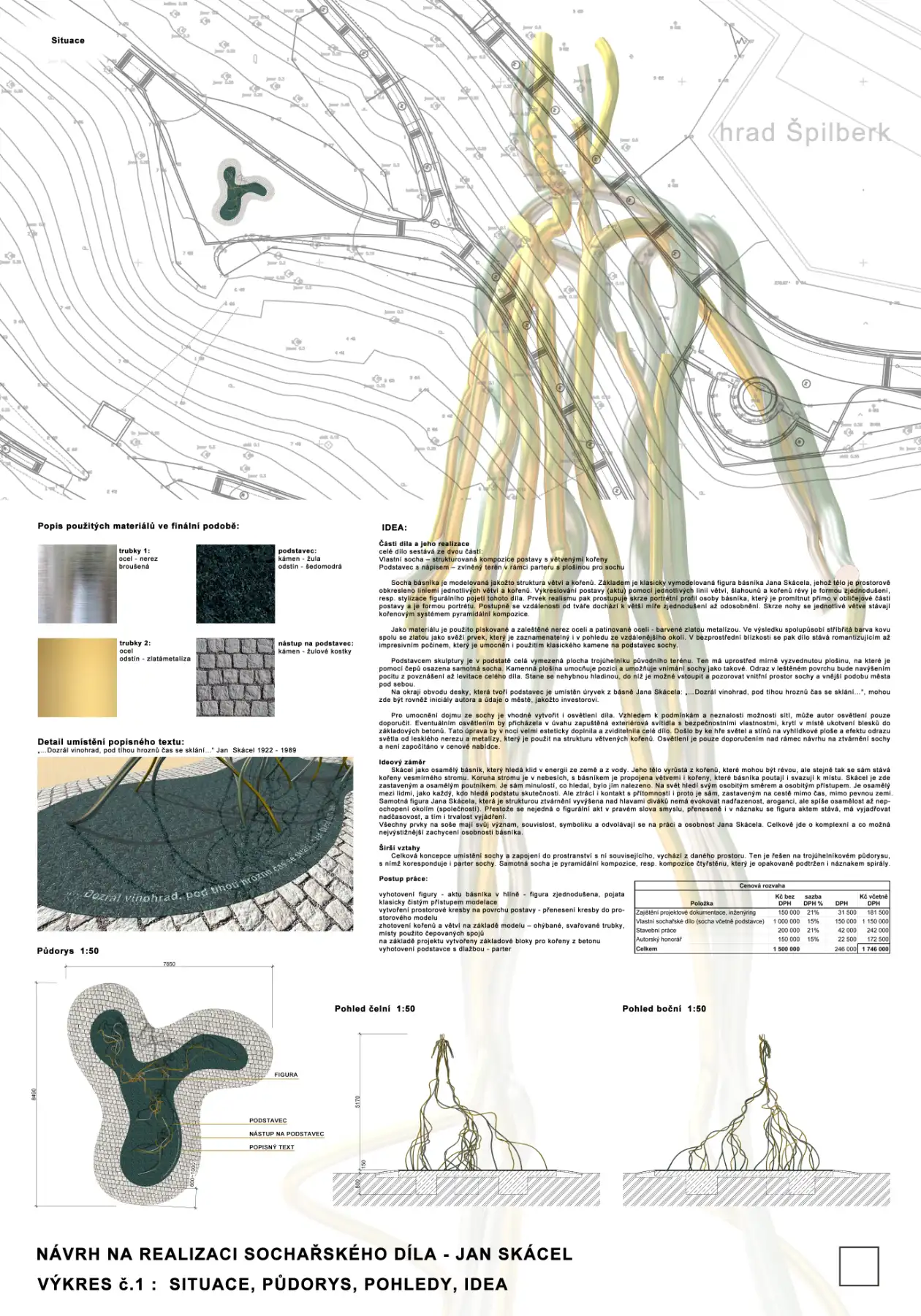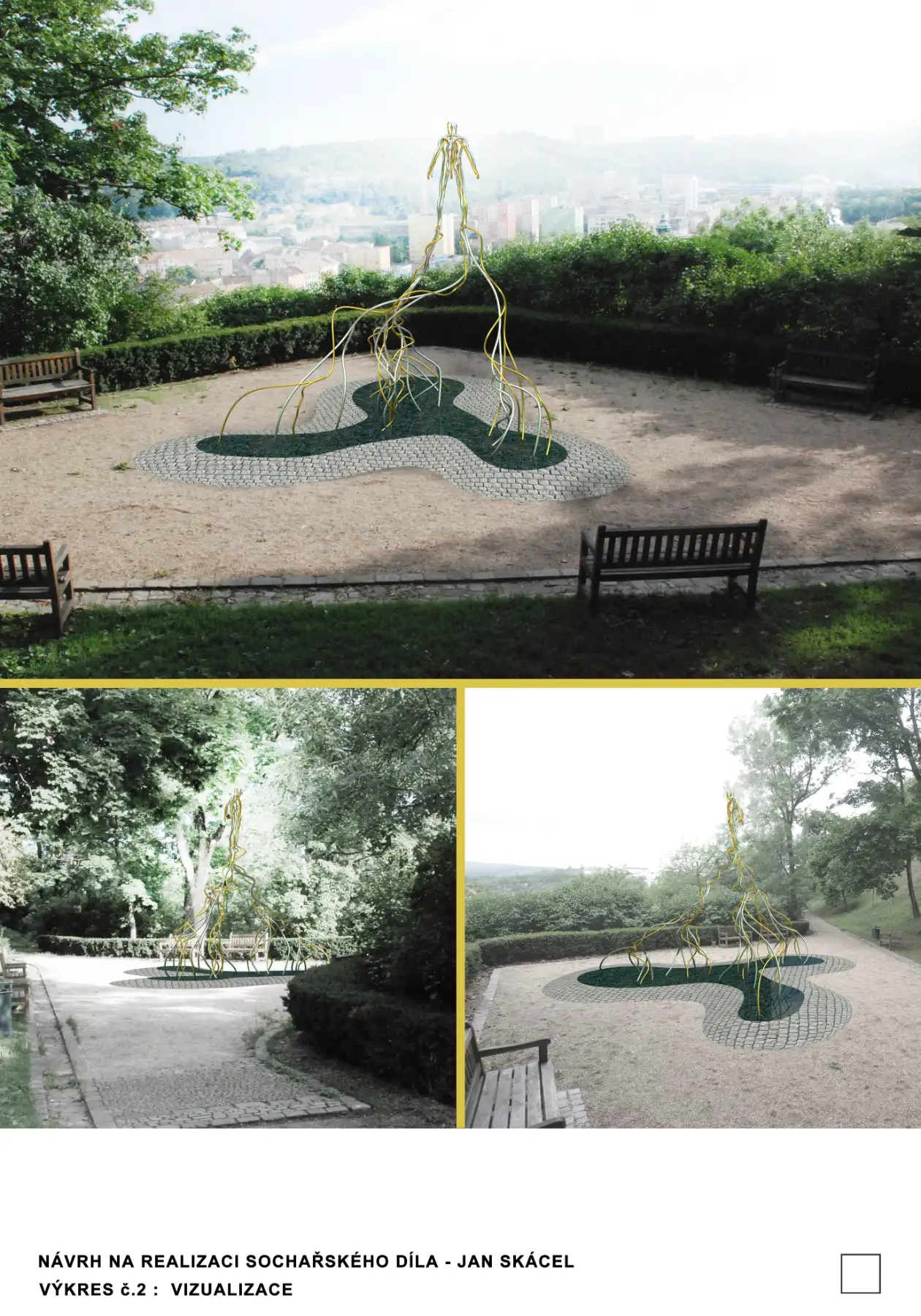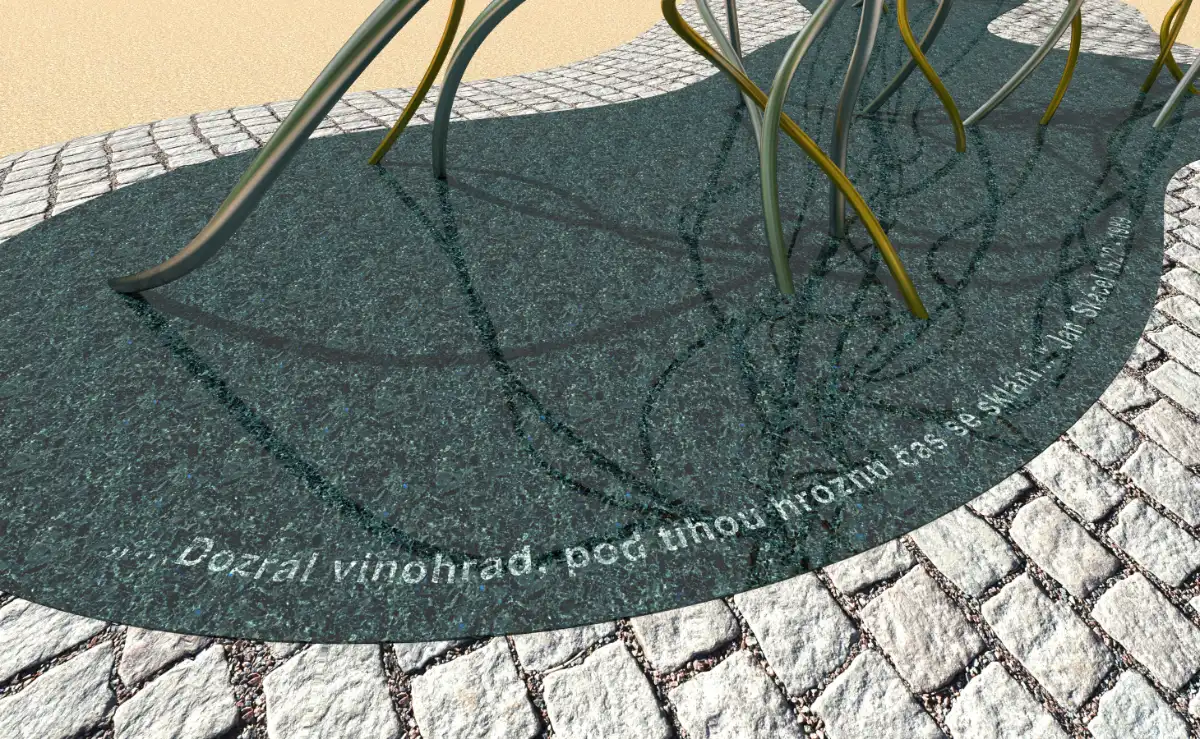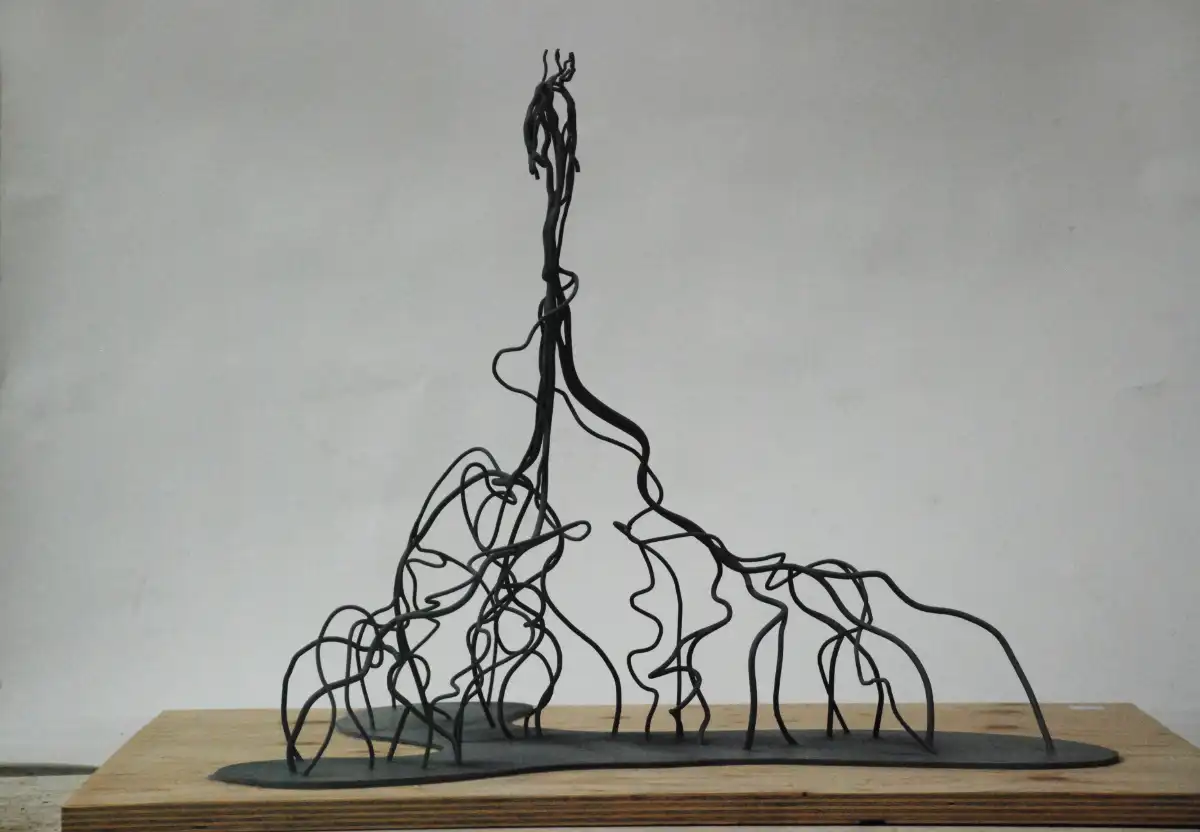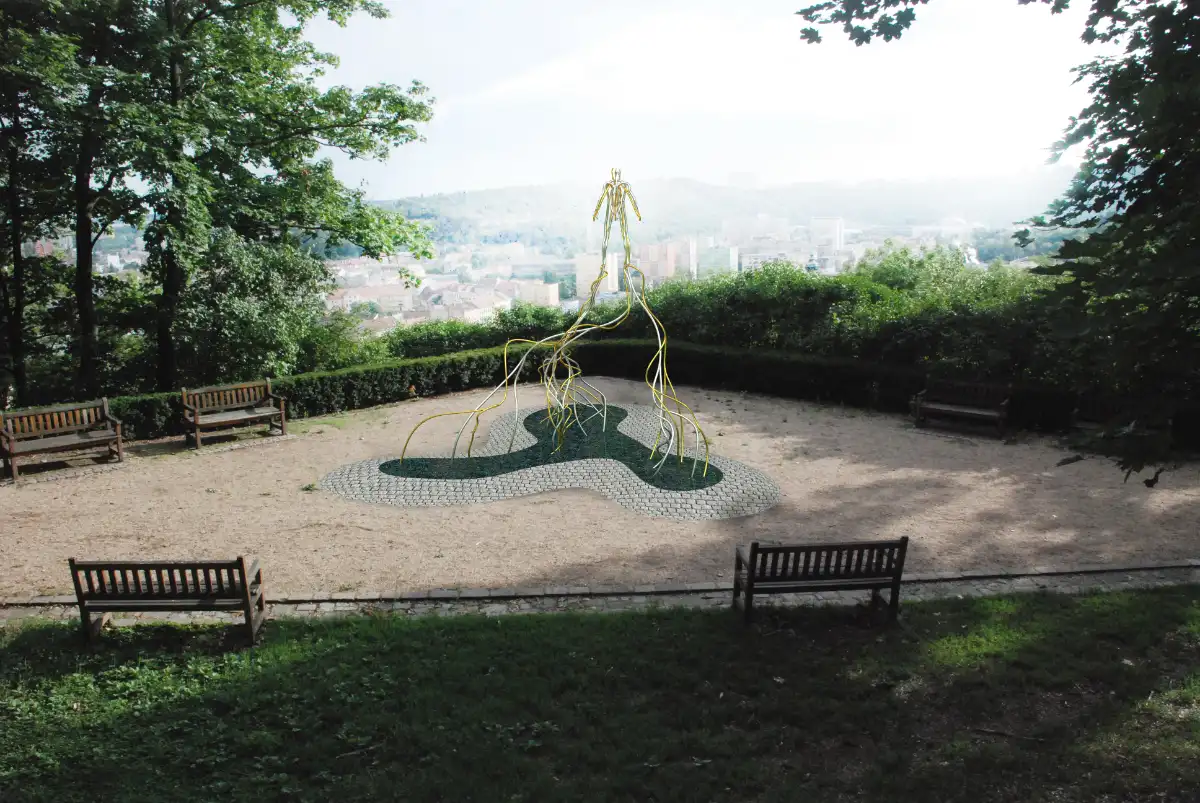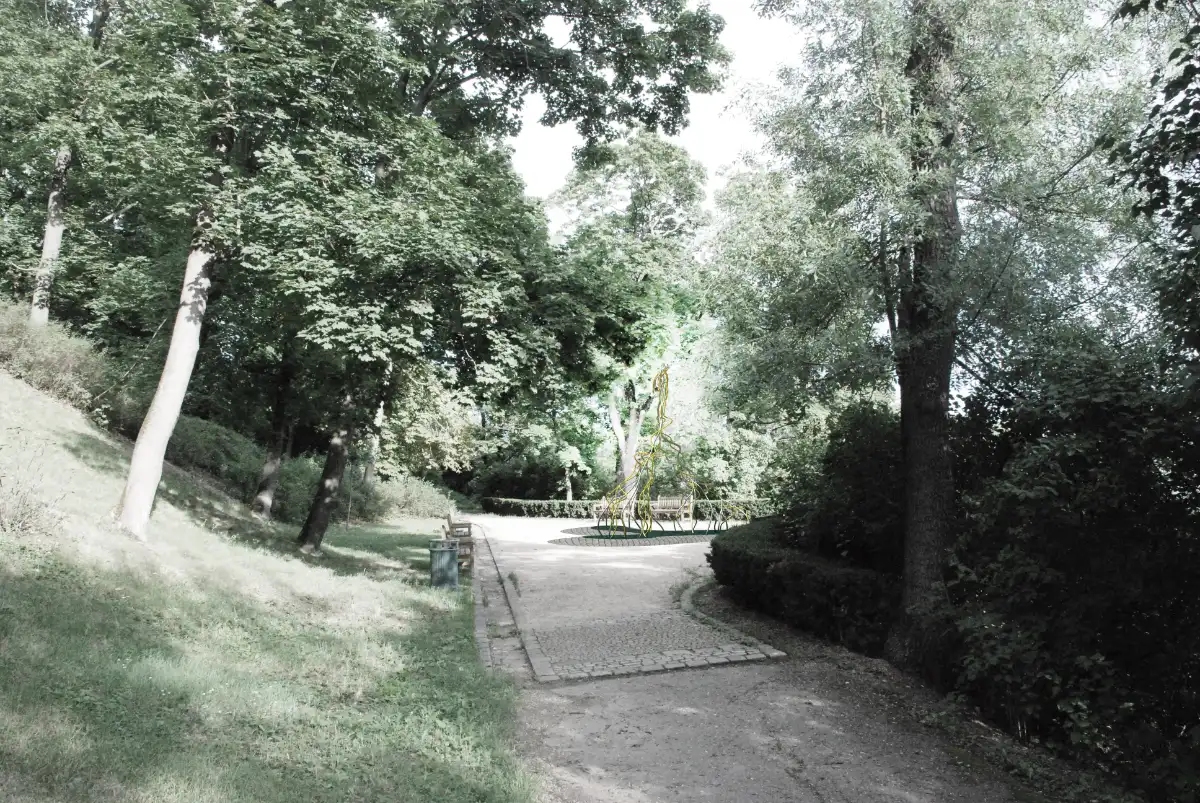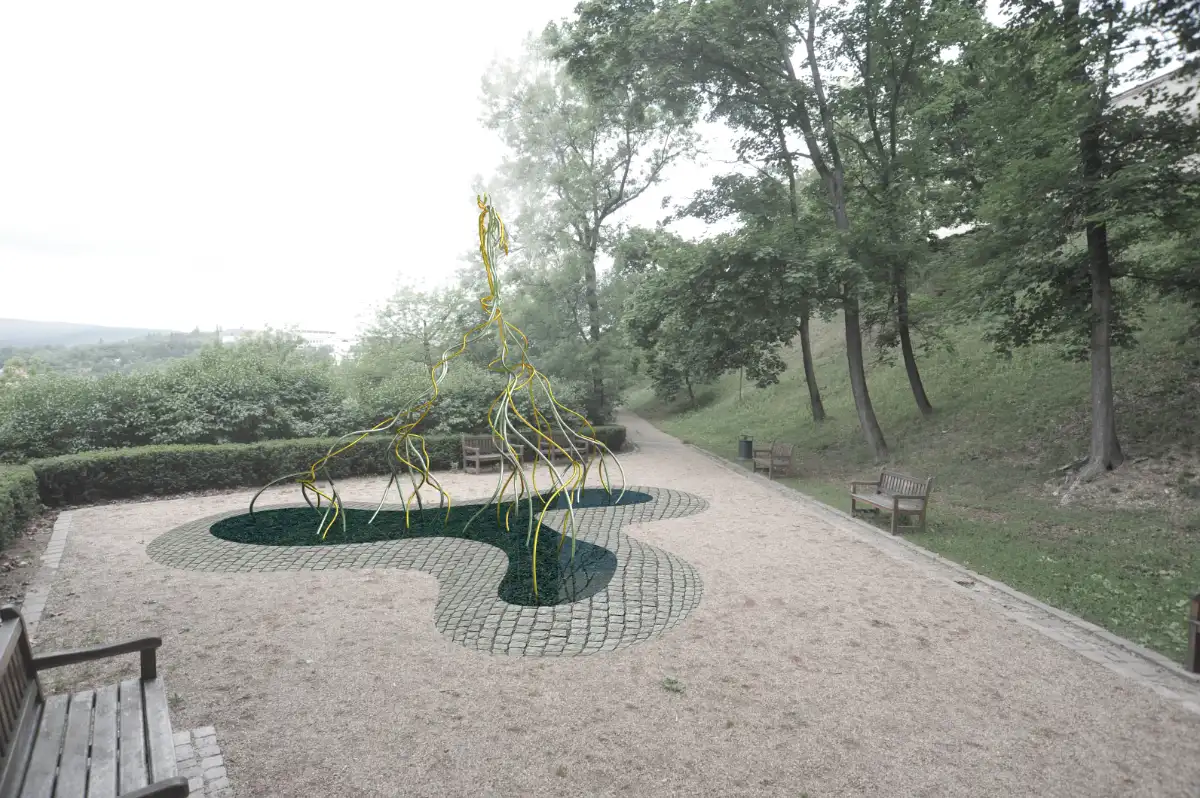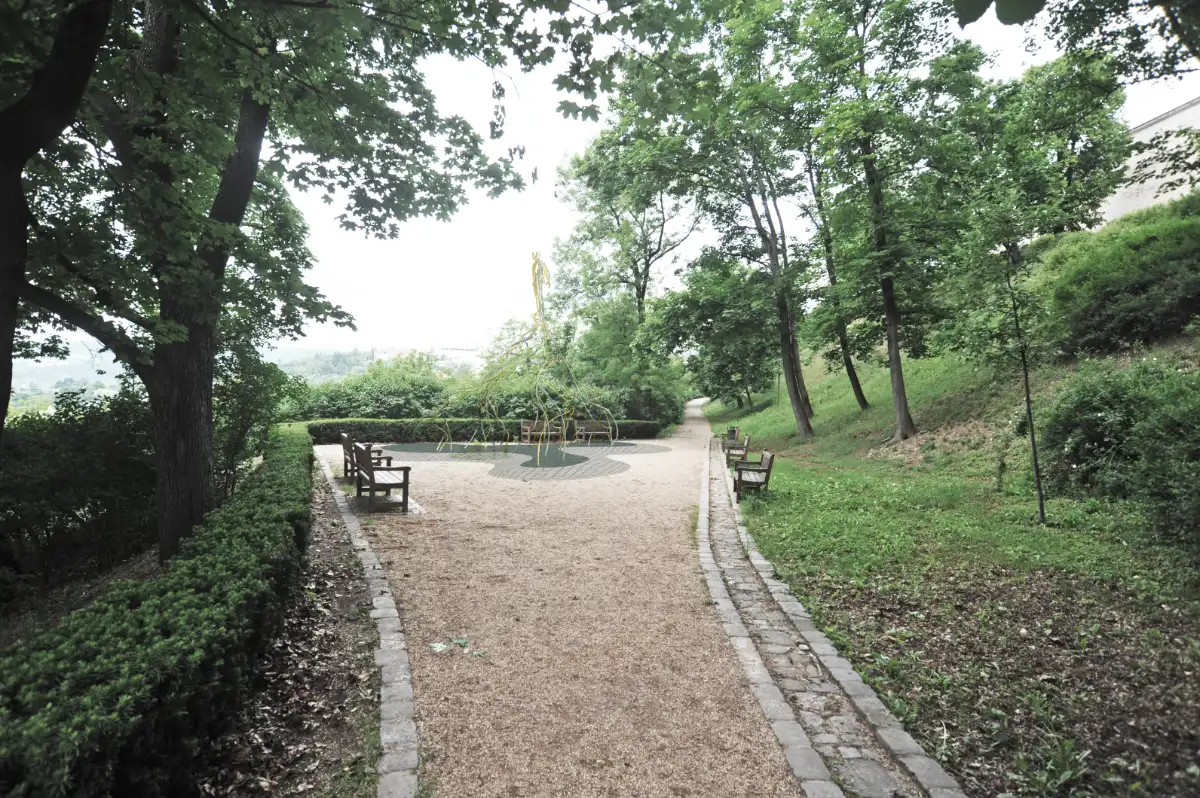Competition proposal for the realization of a sculptural work - Jan Skácel, 2014
Parts of the work and its realization
the whole work consists of two parts:
• Custom sculpture – a structured composition of a figure with branching roots
• Inscribed plinth – undulating terrain within parterre with platform for sculpture
Co-author: MgA. Michal Šmeral
Architectural solution: Ing. architect Pavel Malina
Introduction – subject of the competition proposal
The work – a sculpture by the poet Jan Skácel, represents a stopped pilgrim above the city.
A hovering to levitating figure, which is formed by the structure of the vine’s branches and roots.
The whole work is based on a triangular composition.
The statue of the poet is modeled as a structure of branches and roots. The basis is the classically modeled figure of the poet Jan Skácel, whose body is spatially outlined by the lines of individual branches and roots. Drawing a figure (nude) using individual lines of branches, tendrils and vine roots is a form of simplification, or stylization of the figurative concept of this work. The element of realism then permeates through the portrait profile of the poet, which is projected directly in the facial part of the character and is a form of portrait. Gradually, with the distance from the face, there is a greater degree of simplification and even depersonalization. Through the legs, the individual branches become the root system of the pyramidal composition.
The material used is sandblasted and polished stainless steel and patinated steel – painted with gold metallic. As a result, the silvery color of the metal works together with the gold as a fresh element that is noticeable even when viewed from a distance. In the immediate vicinity, the work then becomes a romanticizing and impressive feat, which is also enhanced by the use of classical stone on the base of the statue.
The base of the sculpture is essentially the entire defined area of the triangle of the original terrain. It has a slightly raised platform in the middle, on which the statue itself is mounted using pins. The stone platform enhances the position and allows the perception of the sculpture as such. The reflection in the polished surface will increase the feeling of elevation and even levitation of the entire work. It will become an immobile surface into which it is possible to enter and observe the interior space of the sculpture and the exterior form of the city below.
On the edge of the perimeter of the plate that forms the pedestal, there is an excerpt from Jan Skácel’s poem: “…The vineyard is ripe, under the weight of the grapes, time bends…”, there can also be the initials of the author and information about the city, as an investor.
To enhance the impression of the sculpture, it is also advisable to create lighting for the work. Due to the conditions and lack of knowledge of network options, the author can only recommend lighting. Possible lighting would include recessed exterior lights with safety features, cover at the point of anchoring of lightning bolts to the foundation concrete. This modification would complement and make the entire work very visible at night. There would be a play of lights and shadows on the viewing area and the effect of light reflection from the shiny stainless steel and metallic used on the structure of the branching roots. The lighting is only a recommendation beyond the proposal for rendering the sculpture and is not included in the price quote.
Idea intent
He jumped like a lonely poet who seeks peace in the energy from the earth and from the water. His body grows from roots that may be vines, but equally he himself becomes the roots of a cosmic tree. The crown of the tree is in the heavens, it is connected to the poet by branches and roots that bind the poet to the place. Skácel is here a stopped and lonely pilgrim. He is the past himself, what he sought was found by him. He looks at the world in his own way and with his own approach. He is lonely among people, like everyone who seeks the essence of reality. But he also loses contact with the present and therefore he is alone, stopped on the road outside time, outside solid ground.
The very figure of Jan Skácel, which is raised above the heads of the audience by the structure of the rendering, is not intended to evoke superiority, arrogance, but rather loneliness and even misunderstanding by the environment (society). Although it is not a figural act in the true sense of the word, metaphorically and in a hint, the figure becomes an act, it is supposed to express timelessness, and thus also the permanence of the expression.
All elements on the statue have their own meaning, connection, symbolism and refer to the work and personality of Jan Skácel. Overall, it is a comprehensive and as concise as possible capture of the poet’s personality.
Broader relationships
The overall concept of the placement of the statue and its involvement in the space related to it is based on the given space. It is designed on a triangular ground plan, with which the parterre of the sculpture also corresponds. The statue itself is a pyramidal composition, or composition of a tetrahedron, which is repeatedly underlined with a hint of a spiral.
Description of the used materials of the work in its final form
Figural part – stainless steel and patinated steel, welded or connected by pins.
Pedestal – tiles – mosaic from the 6×6 cm format.
The platform under the statue – a stone slab made of several pieces without joints
Foundation made of plain concrete in dimensions determined by static calculation based on detailed documents on the load and the properties of the foundation soils.
